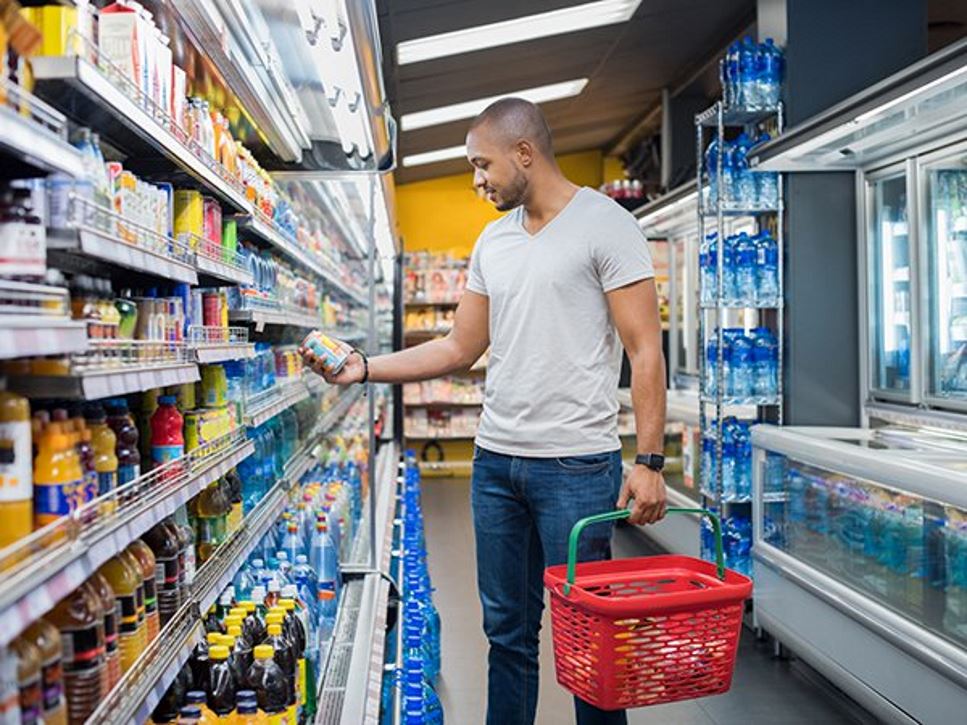Food shopping is the first step in providing safe and healthy food for your family. It is important to carefully select, package and transport food from the grocery store to home to keep it safe. Knowing how to select produce, dairy, meat and seafood can reduce your chance of foodborne illness. Follow these tips for a safe shopping experience.
Make Cleanliness a Priority
- Check for cleanliness and only buy food from reputable businesses that follow food safety regulations. Determine the general impression of the facility and make sure it looks and smells clean.
- Wipes are provided at many stores. Use these to clean hands and the handle of the shopping cart.
- Clean hands before sampling food. Either bring moist towelettes or carry a bottle of hand sanitizer to use before you taste any samples.
- If you use reusable grocery bags, wash them often.
Shop in Order
- Gather non-perishable items first. Then, select refrigerated and frozen items.
- Stop at the deli counter last. Place deli meats near the other cold items in your grocery cart.
- Put fresh fruits and veggies on top of other foods in your cart.
Pick Your Produce
- If you go to a farmers market, go early in the morning to avoid produce that has been sitting out all day.
- Choose loose produce rather than packaged so you have more control over what you select.
- Don’t purchase produce with mold, major bruises or cuts.
- Purchase only the amount of produce you will use within a week.
- Buy only pasteurized juices that have been kept refrigerated.
Inspect Food Packages
- There should be no holes, tears or openings in food packages. Frozen foods should be solid with no signs of thawing. Refrigerated foods should feel cold.
- Check safety seals. A loose lid on a jar means the vacuum has been lost and the product may be contaminated. Don't buy a food product whose seal seems tampered with or damaged. Report a defective cap to the store manager.
- Avoid buying any cans that are deeply dented (one that you can lay your finger into), bulging, rusting or have a dent on either the top or side seam. Deeply dented or bulging cans may be a warning sign of botulism, while cans with a sharp dent may damage the seam and allow bacteria to enter the can.
Check Dairy and Milk Products
- When buying dairy products, choose cartons and containers that are cold.
- Make sure the eggs are clean and aren’t broken or cracked.
- Buy milk and other dairy products toward the end of your shopping trip. This will lessen the time these items are out of refrigeration.
Be Selective with Fish and Seafood
- Buy fish only from reputable sources such as grocery stores and seafood markets.
- Check for proper refrigeration of fresh fish. Look to see that flesh is shiny and firm, not separating from the bone, and the odor is fresh and mild, rather than overly "fishy".
- Make sure packaged seafood is well-packed in ice and that packages are tightly sealed and free of dents and tears. Avoid packages containing ice crystals. This is a sign the seafood has previously thawed.
- Buy unwrapped cooked seafood such as shrimp, crab or smoked fish only if it is displayed in a separate case or a physically separated section from raw fish. Bacteria on raw fish can contaminate cooked fish.
Look Over Meats and Poultry
- Make sure packaging is tightly sealed and is very cold to the touch.
- Choose packaged chicken that looks pink, not gray.
- Always look for the Safe Food Handling label on packages of bacon and fresh sausage. This label means the meat has undergone safe processing and includes handling and cooking tips.
- Select meats and poultry after shopping for non-perishable items.
Separate Certain Foods
- Put raw meat, poultry and seafood in plastic bags before placing them in your cart. This keeps them from leaking and dripping onto ready-to-eat foods such as bread or produce.
- When checking out, place raw meat, poultry and seafood in separate bags from ready-to-eat foods.
At Home
- Take groceries home immediately and store them right away. If you must run errands and will be out longer than 30 minutes, bring a cooler with chill packs for perishable foods. The temperature of refrigerated food can go up 8 to 10 degrees Fahrenheit on a typical trip home from the store. Perishable foods must be refrigerated within two hours and only one hour if it is over 90°F outside.
- Keep perishable foods out of the hot trunk in summer and place in the air-conditioned car instead.
- Promptly refrigerate or freeze perishable items as soon as you get home.
References
Find a Nutrition Expert
Looking for credible nutrition information and recommendations? The Academy of Nutrition and Dietetics' network of credentialed food and nutrition practitioners are ready to help!

